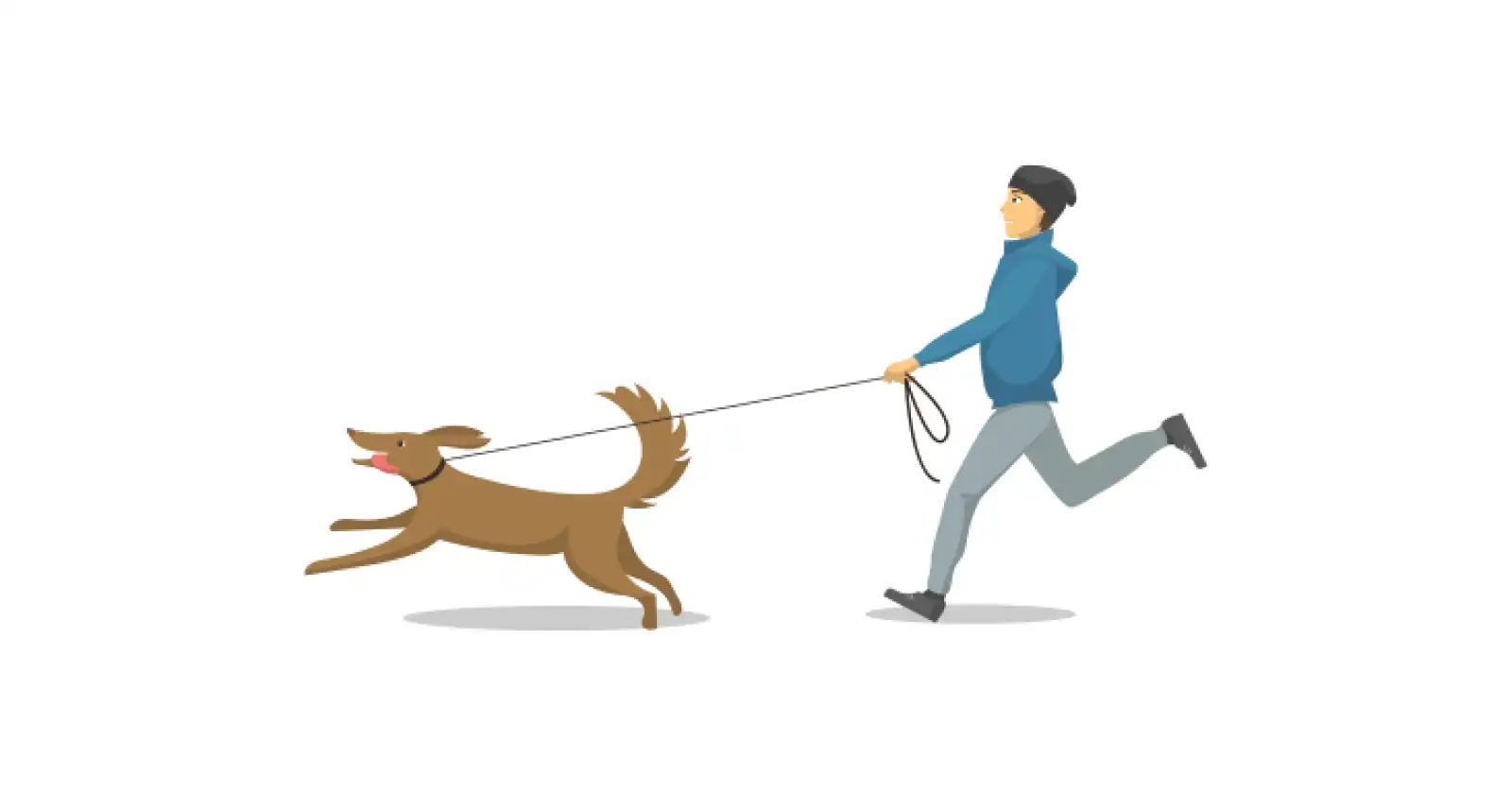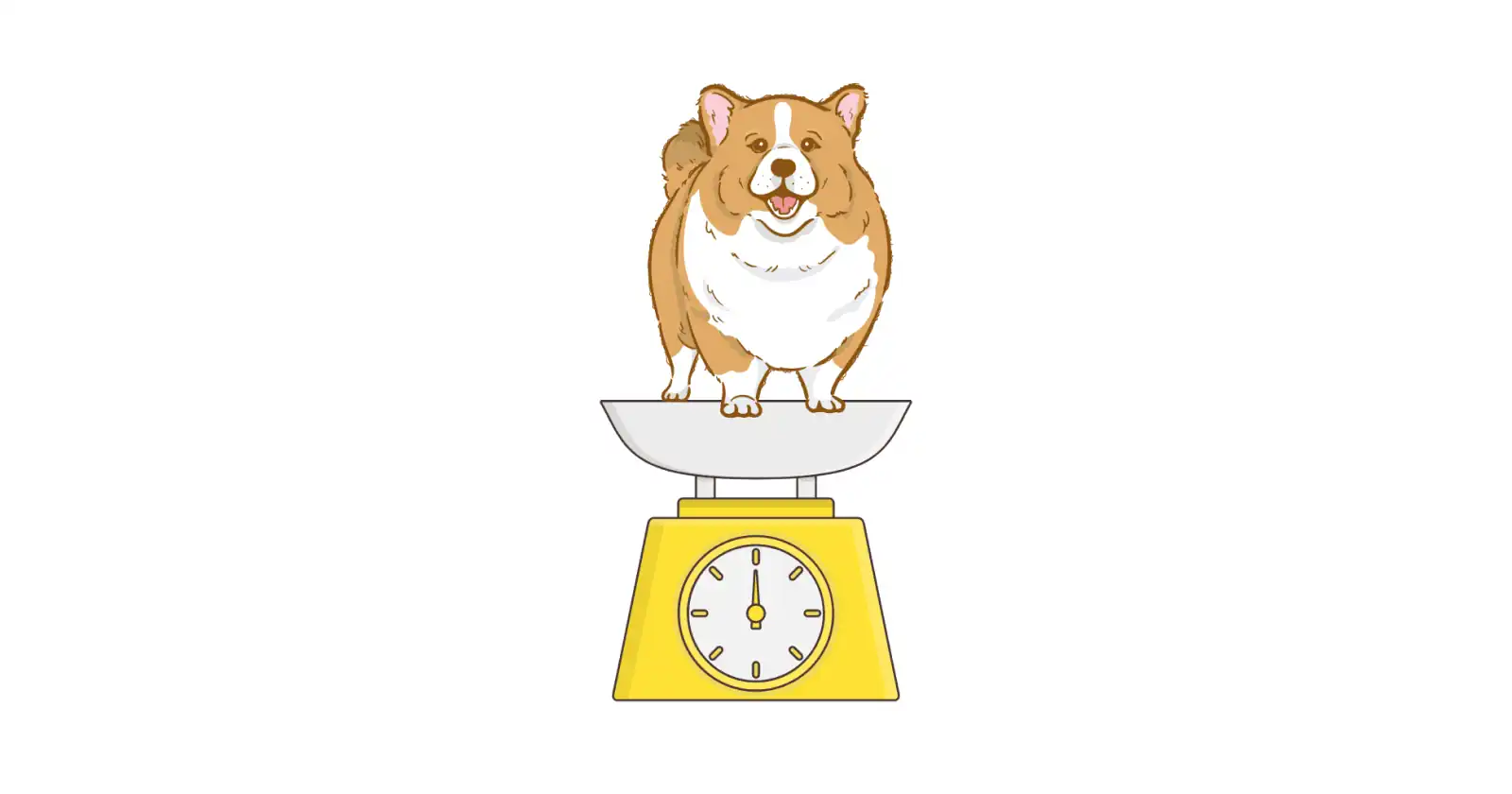The complete guide for dogs in the heat cycle

Table of Contents
Are you a proud pet parent of a female furry canine friend? Then you know how important it is to take care of your pooch's health and well-being, especially during their heat cycles.
What is the heat cycle:
The heat cycle, also known as the oestrous cycle, is the reproductive cycle in female dogs. It is the period during which a female dog becomes sexually receptive and can conceive a pregnancy.
Small breed dogs go into heat once every 3-4 months, mid-breeds can cycle every 6 months, and large dogs can cycle every 6 to 12 months and the heat cycle consists of four phases:
- Proestrus
- Estrus
- Diestrus
- Anestrus
One of the most crucial aspects of dog care is understanding their heat cycle. It's not only essential for their health, but it can also prevent unwanted litter. In this ultimate guide, we'll take you through the phases of the dog heat cycle and give you tips on managing it.
How long does a dog in heat bleed?
The signs that a dog is in heat include a swollen vulva, bloody discharge, increased urination, behavioural changes such as restlessness and seeking out male dogs, and an increased interest in their surroundings. These signs usually occur every 6 to 12 months and last for around three weeks. The age at which a dog starts their first heat cycle can vary depending on the breed and size of the dog.
Here are some breed-specific guidelines for when dogs may start their first heat cycle:
- Small breed dogs (such as Chihuahuas, Toy Poodles, and Yorkshire Terriers) may start their first heat cycle as early as six months of age.
- Medium-breed dogs (such as Cocker Spaniels, Beagles, and Border Collies) may start their first heat cycle between six and twelve months of age.
- Large breed dogs (such as Boxers, Labrador Retrievers, and German Shepherds) may start their first heat cycle between twelve and eighteen months of age.
- Giant breed dogs (such as Great Danes, Saint Bernards, and Mastiffs) may start their first heat cycle between eighteen and twenty-four months of age.
The length of time a dog in heat bleeds can vary, but it typically lasts for around 7-14 days. During the first few days of the heat cycle, the discharge may be light in colour and volume, gradually becoming darker and more significant over time. After the bleeding stops, the female dog will enter the next phase of the heat cycle, known as the estrus phase, during which she will be more receptive to mating. It's important for pet parents to keep their female dogs clean and comfortable during the heat cycle and to take precautions to prevent unwanted pregnancy.
Stages of Heat Cycle
Phase 1: Proestrus - The "Not-Quite-Ready" Phase
Proestrus is the first phase of the dog heat cycle, and it lasts for about 7-14 days. During this phase, you may notice your dog's behaviour and body language changing. They may become more restless and seek attention. However, they won't be ready for breeding yet. You may also notice a bloody discharge from your dog's vagina, which is a clear sign that your pup is in the proestrus phase.
Tip: Be patient with your furry friend during this phase. They may be moody and crave attention, so give them lots of love and attention.
Phase 2: Estrus - The "Time to Mate" Phase
The estrus phase is the time when your furry friend is the most fertile and ready to mate. It usually lasts for around 5-10 days and is characterised by a yellowish discharge from your dog's vagina. During this phase, your dog may become more vocal and restless, and you may notice male dogs around your home or yard.
Tip: Keep a close eye on your furry friend during this phase, and make sure to keep them away from male dogs unless you want them to mate.
Phase 3: Diestrus - The "Pregnancy or False Alarm" Phase
If your furry friend has mated during the estrus phase, they may become pregnant during the diestrus phase, which lasts for around 10-140 days. However, if your dog hasn't mated, this phase can also result in a false pregnancy. During this phase, your dog may become more lethargic, and you may notice changes in their appetite and behaviour.
Tip: If you suspect that your furry friend is pregnant, take them to the vet for a check-up. They will be able to confirm the pregnancy and give you tips on how to take care of your pregnant pup.
Phase 4: Anestrus - The "Take a Break" Phase
Anestrus is the final phase of the dog heat cycle, it is the downtime till the dog gets into next cycle. During this phase, your furry friend's body is taking a break from the heat cycle, and they won't show any signs of being in heat.
Tip: Take advantage of this phase to bond with your furry friend and focus on their overall health and well-being.
How to take care of a dog in heat?
- During your dog's heat cycle, she will need extra attention and care. Many dogs feel extra snuggly during heat, so set out time for lots of cuddles.
- You can keep her amused and reduce her anxiety by taking her on more walks, potty breaks and providing distractions and chew toys.
- Make sure she is eating well and drinking plenty of water.
- Never scold your doggo if they make a mess during heat, talk to them calmly.
- It's important to keep her away from non-neutered dogs to prevent unwanted pregnancy. You can confine her to areas without carpeted floors or upholstered furniture for easy cleanup.
- You can also invest in good doggy diapers. There are disposable and reusable options available in the market. You can also buy human baby diapers and make a hole for the tail to make it dog-friendly.
- If you want to prevent conception, you can have your dog surgically sterilized after the first heat/estrus cycle
The heat cycle can be challenging, but with proper care, you can keep your dog comfortable and healthy.
How do I know my dogs heat cycle is over?
The heat cycle in dogs consists of three phases: proestrus, estrus, and diestrus. The diestrus phase is the final phase, during which the female dog's reproductive system returns to its normal state. Here are some signs that your dog's heat cycle is over:
- The bleeding has stopped: Typically, the bleeding associated with the proestrus and estrus phases will last for around 7-14 days. Once the bleeding has stopped, this is a good indicator that the heat cycle is over.
- The vulva has returned to its normal size: During the heat cycle, the female dog's vulva will become swollen. Once the heat cycle is over, the vulva will return to its normal size.
- The female dog is no longer receptive to male dogs: During the estrus phase, the female dog will be more interested in male dogs and may exhibit flirtatious behaviour. Once the heat cycle is over, this behaviour should stop.
Heat Cycle in Male Dogs:
Unlike female dogs, male dogs do not have a heat cycle. Instead, they go through a continuous process of producing and releasing sperm throughout their life. This means that male dogs are always fertile and can mate at any time. However, the quantity and quality of their sperm may decline as they age. Additionally, male dogs may display behavioural changes and may become more aggressive or territorial when they sense a female dog in heat nearby.
If your puppy is showing any unusual symptoms or having difficult time during heat cycles, you can schedule a vet video consultation using Kuddle App to get in touch a vet to understand how can help her feel better and relief pain.


